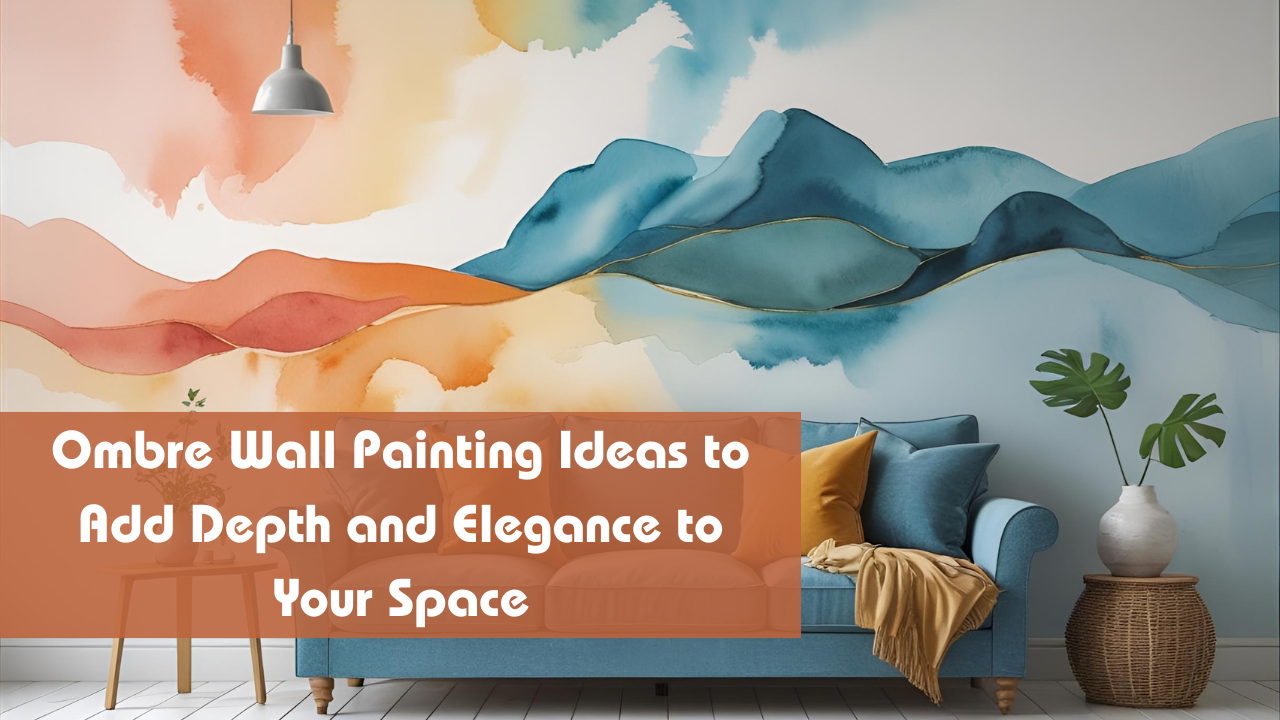Looking for a stylish way to elevate your walls without overwhelming the room? Ombre wall painting is a trending interior design technique that brings subtle depth, elegance, and a gradient of color that’s both calming and modern.
Whether you’re designing a feature wall or refreshing an entire room, ombre finishes can create a smooth transition of shades that mimic a designer’s touch—without the cost of hiring one.
What Is an Ombre Wall?
The term “ombre” comes from the French word meaning “shaded.” In interior design, it refers to a gradual transition from one color hue to another, typically moving from dark to light or between two tones within the same color family.
This effect creates a soft, dreamy look that works beautifully in:
- Bedrooms
- Bathrooms
- Living areas
- Nurseries or kids’ rooms
- Reading corners
Benefits of Ombre Wall Painting
Here’s why ombre walls are more than just a trend:
- ✅ Adds Visual Interest – Transitions draw the eye and break monotony.
- ✅ Creates Illusion of Height or Space – Lighter tones at the top make ceilings feel higher.
- ✅ Versatile with Any Style – From boho to modern minimalist.
- ✅ Works with Any Palette – Cool blues, warm neutrals, bold pinks—you name it.
Top Ombre Wall Painting Ideas to Try
1. Classic Light-to-Dark Gradient
Start with a light shade at the top of the wall and slowly deepen it toward the bottom. This creates a waterfall-like flow and is great for adding coziness to bedrooms.
2. Sunset-Inspired Tones
Use shades like peach, coral, pink, and lavender to mimic the beauty of a sunset. It works wonderfully in living rooms and creative spaces.
3. Neutral Elegance
Think ivory to taupe or beige to charcoal for a subtle ombre effect that feels elegant and timeless. This is perfect for modern, minimal interiors.
4. Vertical Ombre Fade
Instead of blending colors from top to bottom, do it side to side. This gives a mural-like impression and can draw attention to a specific area like a reading nook or home office.
5. Bold Contrast Ombre
Combine two contrasting colors—like navy blue to teal, or forest green to mint. Use a sponge or dry brush to blend the mid-section for a soft transition.
Tools You’ll Need
To create a smooth ombre wall, you’ll want the following:
| Tool | Purpose |
|---|---|
| Two or three paint shades | For the gradient effect |
| Paint rollers | Cover larger sections |
| Brushes or sponges | For blending the transition zone |
| Painter’s tape | To protect ceilings, trims, or edges |
| Drop cloths | To protect the floor |
| Spray bottle (optional) | Light misting helps soften transitions |
How to Paint an Ombre Wall – Step-by-Step
Step 1: Prep the Surface
Clean the wall, tape off edges, and lay down a drop cloth. Make sure the wall is smooth and primed.
Step 2: Divide the Wall
Lightly sketch horizontal guidelines to separate each shade section (typically three: light, medium, dark).
Step 3: Apply Base Colors
Paint each section with its designated shade. Don’t let them dry fully yet—blending works best while paint is wet.
Step 4: Blend the Borders
Using a clean brush or sponge, blur the dividing lines where two shades meet. Work in small sections and blend quickly for a natural transition.
Step 5: Let It Dry
Allow the wall to dry fully, then do a second coat or touch-up as needed.
Pro Tips for a Flawless Finish
- Use similar tones within the same color family for easier blending.
- Mist edges with water before blending to keep paint workable.
- Practice blending on a cardboard sheet before starting on the wall.
- Use high-quality paint for smoother coverage and richer color payoff.
Final Thoughts
Ombre wall painting is a creative yet simple technique that can dramatically shift the mood and style of any room. Whether you want a bold transformation or a soft backdrop, the ombre effect delivers a layered look that’s sophisticated and modern.
So, if you’re ready to move beyond plain paint, give ombre walls a try—you’ll be surprised by the elegance and ambiance they bring.
Bonus Resource: Check out this complete color blending guide on The Spruce to find perfect shades for your ombre wall project.

